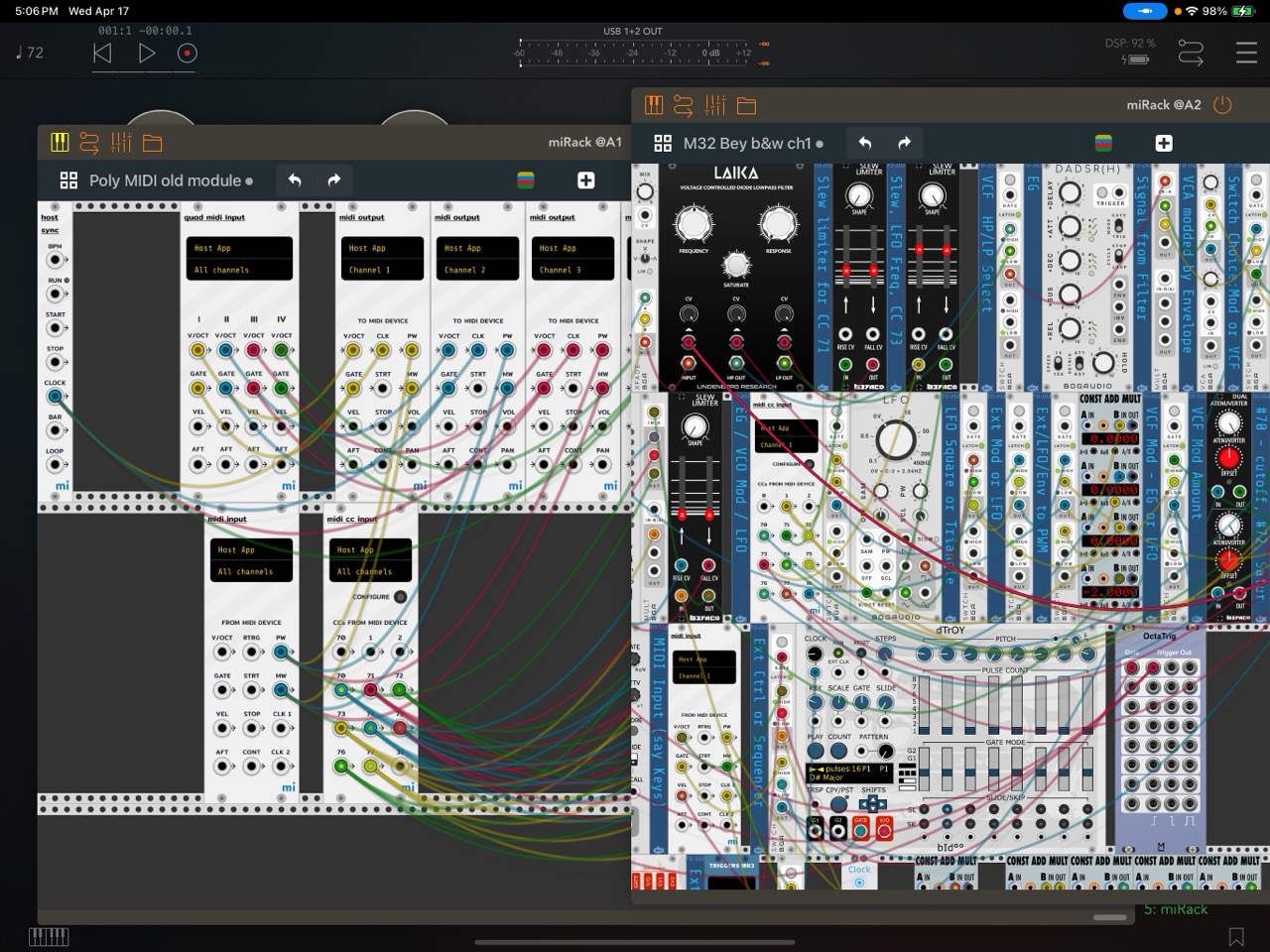It finally works! However, it is CPU intensive with 5 instances of miRack running. The first miRack patch is used to accept 4 notes of polyphony and distribute those notes to each “M32 Bey b&w ch#” patch. I have included all four patches. Each of the M32 Beyond type patch is set up the same except for the MIDI channels for the notes and incoming CCs to change some of the settings.
I am currently using an MPK Mini MK3 as a MIDI keyboard controller to play this instrument. I have set it up to output on MIDI channel 7 and the receiving M32 Beyond type patch’s receive in channels 1 to 4.
The MIDI CCs change all the instances the same. The CCs I have assigned are:
70: cutoff frequency
71: response (resonance)
72: saturation
73: LFO V/Oct (LFO speed)
74: Env attack
75: Env decay
76: Env sustain
77: Env release
The pitch bend and mod wheel work (joystick on the MPK). Those last two are on the MIDI Input module.
There are a couple of quirks in its current state. I am not sure how to get the whole thing to open with settings that make it hum along nicely. WHAT EXACTLY do you do to get some nice fat sounds in this state? First open up the cutoff frequency. The add some sustain. From there you should get some good sounds from a keyboard or sequence it.
And the reason why the sustain is at 0 is because I have found that leaving (some but maybe not all?) controls at some level on the module(s) itself often sets that control at some baseline level. Using CCs to change the control is now limited. Setting the control at 0 provides full range of control by CC. I am not sure if this applies to all modules or not.
If you are happy with less polyphony, just use less instances of the M32 Bey b&w ch# patch. And you can free up more CPU by deleting the modules that allow for integration of MIDI CC control over the above documented parameters. Just take care to note where those patch cables go when you delete stuff.
And my solution to the multiplication of controls problem uses the output from two numbers multiplied together into a math module that allows the input to have a square root performed on it. If you are wondering what it is I am talking about, a quick example is plotting this function:
y = x^2 OR y = x*x
The result is a parabola. When using a range of values between 0 and 10, the closer you get to 10 for each number multiplied (from the parameters) the faster you get to 100. This results in an uneven range of sounds produced by the result divided by 10 (to bring the result back to a range between 0 and 10). So, if you are using this result to change the cutoff frequency, the knob does not produce very noticeable results in the lower ranges. Then, once you start to get a lot closer to 10, the effect becomes very noticeable. Taking the square root of the result produces a more linear result instead of an exponential one.
Have fun! Let me know what you think!


